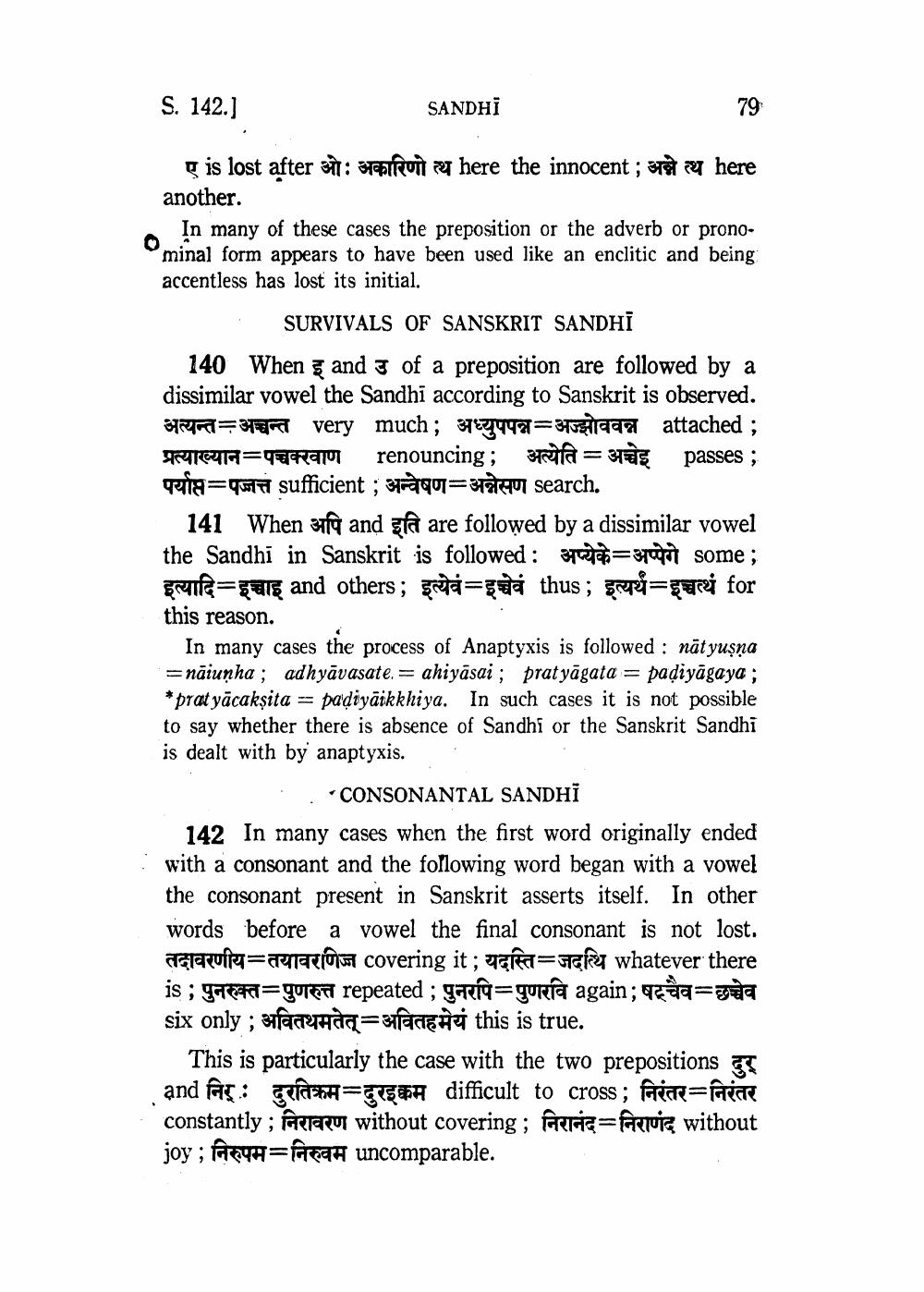________________
S. 142.]
SANDHI
79
ए is lost after ओ: अकारिणो त्थ here the innocent ; अन्ने त्थ here another.
In many of these cases the preposition or the adverb or pronominal form appears to have been used like an enclitic and being accentless has lost its initial.
SURVIVALS OF SANSKRIT SANDHI 140 When 3 and 3 of a preposition are followed by a dissimilar vowel the Sandhi according to Sanskrit is observed. GARR=37* very much; 3784450=3755C attached ; area=q TM renouncing; Ba =this passes ; pia=que sufficient ; qu=31224 search.
141 When sifa and ça are followed by a dissimilar vowel the Sandhi in Sanskrit is followed : अप्येके अप्पेगे some ; grife=aug and others; stir thus ; gapiri for this reason.
In many cases the process of Anaptyxis is followed : nātyuşņa =nāiunha ; adhyāvasate. = ahiyāsai; pratyāgata = padiyāgaya ; *prat yācakṣita = padiyāikkhiya. In such cases it is not possible to say whether there is absence of Sandhi or the Sanskrit Sandhi is dealt with by anaptysis.
CONSONANTAL SANDHI 142 In many cases when the first word originally ended with a consonant and the following word began with a vowel the consonant present in Sanskrit asserts itself. In other words before a vowel the final consonant is not lost. catacurt=UTRIO covering it ; R=FERA whatever there is; geromarguren repeated; garsa=goría again; q ara six only ; अवितथमतेत्=अवितहमेयं this is true.
This is particularly the case with the two prepositions and fas: SA=T&A difficult to cross ; fateme=aare constantly ; Farragut without covering ; facraie=farruia without joy ; निरुपम=निरुवम uncomparable.




